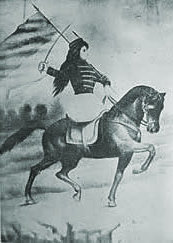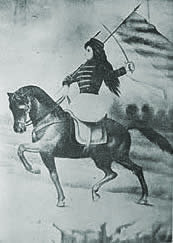
|
Women and Independence in Latin America An exploration of women's involvement in the Latin American Wars of Independence |

|

|
Women and Independence in Latin America An exploration of women's involvement in the Latin American Wars of Independence |

|
Click on the image below to see the full-size image
 Tertulia |
Gender:Female
Ethnic origen: White
Events:
| 1804 | - | Scotland | - | Not applicable | - | She was born in Scotland on 23 December 1804. |
| 1836 | - | United States of America | - | Unknown | - | She travelled here, where she met the historian William Prescott. |
| 1839-1841 | - | Mexico City | - | Unknown | - | She lived in Mexico City as a diplomat's wife from 1839-41. |
| 1882 | - | Madrid | - | Unknown | - | Died |
Connections:
Foreign travellersTexts:
1843 - Life in Mexico
Biography:
Frances Erskine was born in Scotland on 23 December 1804. Her father was a Scottish lawyer and her mother from a rich Scottish family that made its money from a distillery. She was well-educated and as a child travelled to Italy. In 1828 her father became bankrupt and he died 2 years later. In 1831 Fanny and other female family members emigrated to the United States and opened a school in Boston. In 1837 Fanny and her mother moved to New Brighton, Staten Island where she met diplomat Angel Calderón de la Barca. They married in 1838. From 1839-41 they lived in Mexico, then returned to the US where she wrote up her notes on Mexico. Her Life in Mexico was published 1843. William H Prescott borrowed heavily from this (he never went to Mexico). (Hahner, 1998, 43-46.)
Borah explains that Prescott asked Calderón to make notes of her observations in advance: the letters (probably sent to her family) seem to have been written in the knowledge that they would be used for a publication, although in his preface, Prescott insists that they were not. Indeed, Prescott was so impressed with them that he suggested to Calderón that they be published in their own right. (Calderon de la Barca, 7 ).
Frances Calderón de la Barca reinstated tertulias in Mexico City. She wrote, “I have some intention of giving a series of weekly soirées, but am assured that they will not succeed, because hitherto such parties have failed. As a reason, is given the extravagant notions of the ladies in point of dress, and it is said that nothing but a ball where they can wear jewels, and a toilet therewith consistent, will please them; that a lady of high rank who had been in Madrid, having proposed simple tertulias and white muslin dresses, half the men in Mexico were ruined that year by the embroidered French and India muslins bought by their wives during this reign of simplicity; the idea of a plain white muslin, a dress worn by the lépera, never having struck them as possible. Nevertheless we can but make an attempt. […] On Monday we gave a Tertulia, which, notwithstanding all predictions, went off remarkably well, and consisted of nearly all the pleasantest people in Mexico. We had music, dancing, and cards, and at three in the morning the German cotillon was still in full vigour. Everyone was disposed to be amused, and, moreover, the young ladies were dressed very simply; most of them in plain white muslins. There was but a sprinkling of diamonds , and that chiefly among the elderly part of the community. Still it is said that the novelty alone induced them to come, and that weekly soirées will not succeed. We shall try.”
She points out that her tertulia on 19 December 1840 “was very crowded; and there was a great deal of music and dancing. These weekly soirées are decidedly successful, and the best families in Mexico unite there without etiquette, which we were told it was impossible to bring about…” Also, “we had a very crowded party last evening [26 December], I think the best we have had yet, a fact I mention, because I triumph in my opinion that these weekly parties would succeed in Mexico having proved correct.” She mentions another three soirées that she held in January 1841, and that they were suspended for 6 weeks due to Lent. (Calderón de la Barca, 149-150, 301,306, 308, 354.)
She quotes Madame de Stael’s answer to the comment “women have nothing to do with politics” to justify why she’s writing about politics at the time of the federalists’ (Gómez Farias’s) seizure of power in 1840. “That may be, but when a woman’s head is about to be cut off, it is natural she should ask why?” (Calderón de la Barca, 258)
She notes that, “almost all Mexican women” are well informed about politics. They possess “practical knowledge, the best of all, like a lesson in geography given by travelling”. (Calderón de la Barca, 268)
She died in 1882.
References:
Hahner, June (editor). (1980) Women in Latin American History
Hahner, June E (editor). (1998) Women Through Women's Eyes: Latin American Women in 19th Century Travel Accounts
Werner, Michael S. (editor). (1997) Encyclopedia of Mexico
Calderón de la Barca, Frances (1982) Life in Mexico